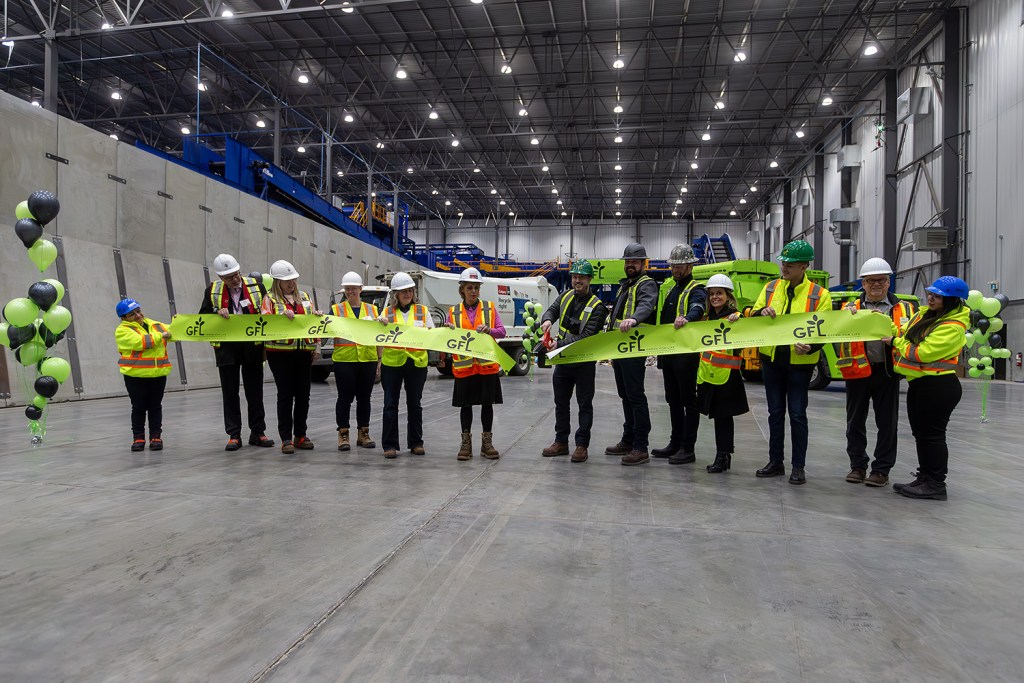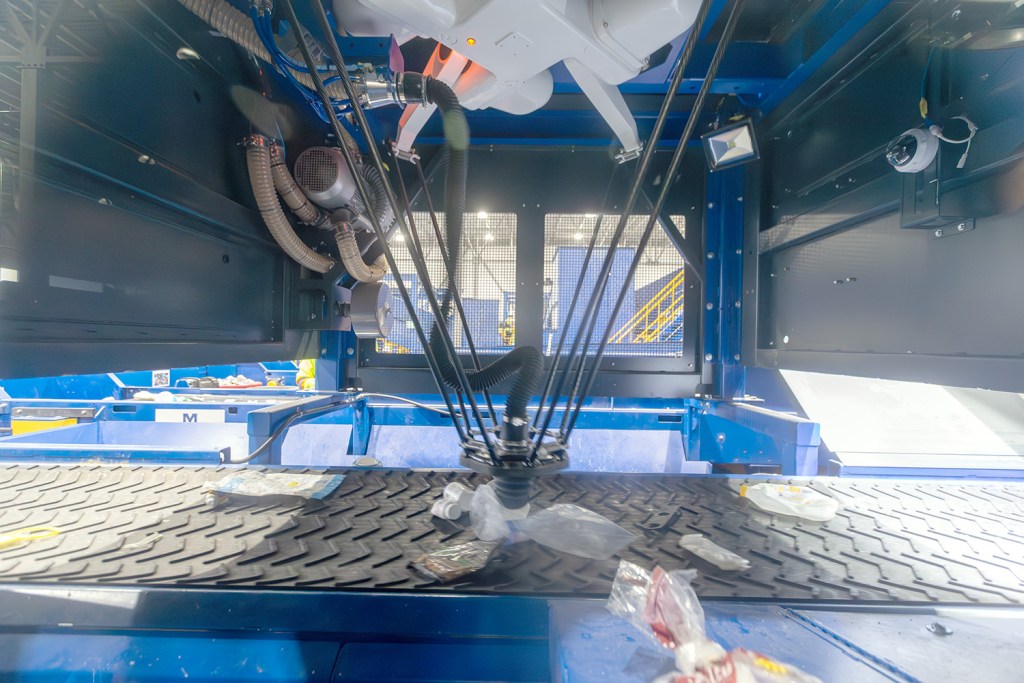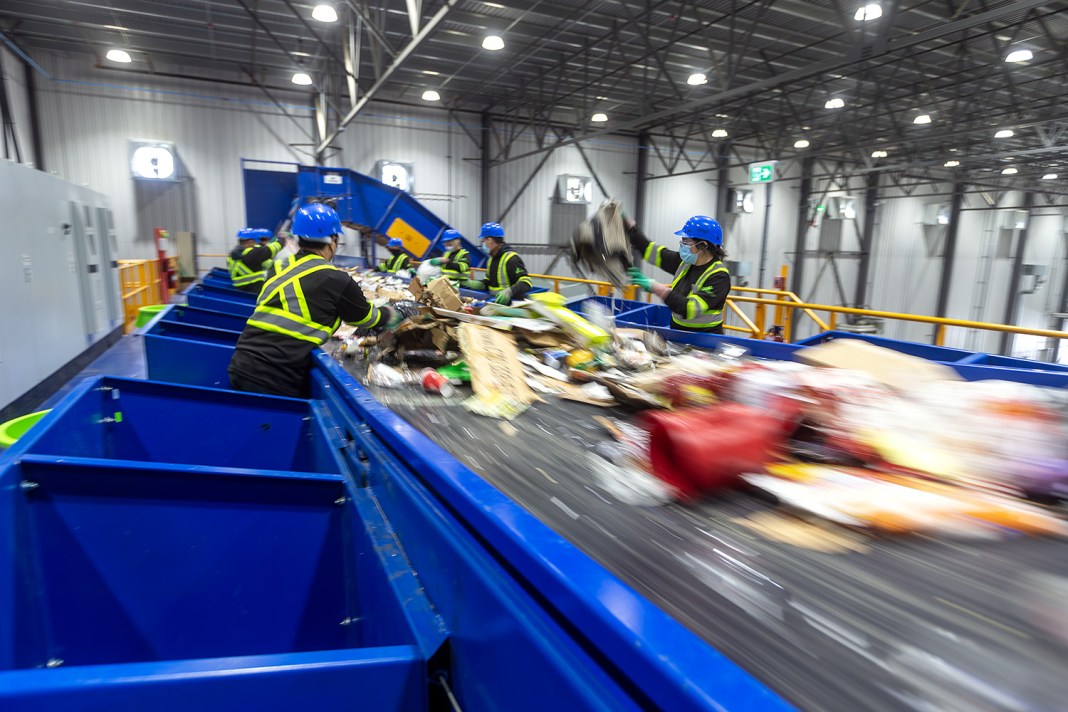With the opening of GFL Environmental’s newest sorting facility, Calgary has the capacity to now address the growing demand—and numbers of trucks, now at over 110—to sort and recycle the blue bin materials produced by Calgarians.
The state-of-the-art facility was opened on Feb. 28 to dignitaries, ahead of a scheduled full scale opening of the facility set for March 1.
When the bay doors are opened to Calgary’s fleet of recycling trucks on that date, the facility will be processing more than 29 tonnes of material per hour to a maximum of 90,000 tonnes per year. The city’s blue bin and commercial recycling contribution to that will total more than 55,000 tonnes.
Sharon Howland with Waste and Recycling Services for the City of Calgary, said that they were proud to work with prior contractor Cascade Recovery+ when the city launched the blue bin program 15 years ago.
“A lot changes in 15 years, of course, so this is all brand new technology. It’s all state of the art. We’re talking about ballistics. We’re talking about robotics. We’re talking about AI. It will sort the material faster, more efficiently, and it will result in a cleaner product that can then be marketed out to recyclers and product manufacturers,” she said.
“This facility for Calgary, for the City of Calgary, for a growing region, it’s such a great opportunity for us to ensure that our recyclables really do get recycled.”

New contract saves city money
Mayor Jyoti Gondek said that from the City’s perspective, anything they could do to divert waste from the landfill and save taxpayers dollars as a result, was the right thing to do.
“Operating landfills is expensive. That was one of the reasons that we wanted to make sure we were encouraging Calgarians to recycle things or compost things as much as possible. I have to say Calgarians have been amazing. In the past 15 years, we have seen 880 million kilograms diverted from the landfill over into the blue bin, so Calgarians know what they’re doing,” she said.
“But we’re still at a place where about 80 per cent of the stuff in the blue bin should be there and 20 per cent shouldn’t be. A facility like this GFL one is going to be able to use technology to sort through the things that shouldn’t be there and make sure that we’re not contaminating the recycling.”
Howland said that GFL was selected as to be Calgary’s recycler for the next five years, as a result of a competitive bidding process that began after the city’s contract with Cascade was coming to an end.
She said that part of the length of contract of five years versus the previous initial 10, was due to provincial Regulated Extended Producer Responsibility Systems (EPR) rules coming into force in 2025.
“The city built EPR conditions into our contract knowing that this was coming. EPR is a provincial regulation that holds producers of products and packaging responsible for the life of that material from start to finish, and they will be required to financially support recycling programs,” Howland said.
“There are going to be changes to how recycling is funded in 2025. We’re excited to hear more about that as a municipality, and I’m sure Calgarians are super excited as well because there will be a reduction in the cost to Calgarians for recycling.”
The net effect, said Howland, was that a state-of-the-art facility that uses a variety of sorting techniques including an AI-powered robot, was one that would save Calgarians money and also extend the lifespan of the City’s remaining landfills.
“Those landfills are such valuable assets, and it is unlikely that we will ever be able to site a landfill close to Calgary again. So in order to save on all of those costs, the transportation costs of holding and disposing of waste, if we can make those landfills last as long as possible by recycling and composting, there’s enormous value.”

Better, more advanced, Canadian made facility
Brent Jespersen, GFL’s General Manger for Southern Alberta, said that the facility was designed to be faster and more efficient than older sorting facilities, and to better process materials to provide a better and more saleable recycled product to purchasers.
Even the machinery used to do the sorting was entirely designed and made in Canada.
“The introduction of AI technology is probably the biggest leader in building a state-of-the-art facility such as this. The computers are reading what the material is flowing through the systems, which gets us a higher diversion rate, and ultimately better quality for in market users,” he said.
Jerperson said that for the past six months the facility has been ramping up, with operations accepting between 30 to 40 trucks per day. The switch to the over 110 come Friday, he said, was daunting but welcomed.
“From a staffing perspective, from a training perspective, we are very confident that it is going to be a very exciting day for us,” he said.
Wednesday’s event was also attended by dignitaries from Rocky View County, including Reeve Crystal Kissel. She said that the facility would also be processing the recycling materials from Langdon, at about 325 tonnes per year.
Mayor Gondek said that the decision to have the facility outside of the borders of Calgary was based on a number of factors, including the existing GFL infrastructure at the site, and improved municipal partnerships between the City of Calgary and Rocky View.
“It makes sense from an efficiency point of view, and frankly, it’s not so far from Calgary that we are shipping things and really doing more damage in terms of emissions,” she said.
“Anytime you can strike a partnership to do really good work. That’s something we should be looking at. For far too long, we had a very combative relationship between municipalities in the region. We’ve turned that around. We’ve seen where we have efficiencies that can be offered because we’re working together. And frankly, this sounds super cheesy: we’re all in this together.”



